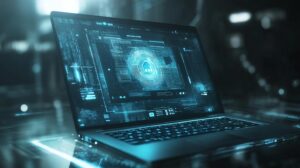Explore the insights provided by the DeepFake-o-meter in detecting AI-generated media and the challenges faced in identifying deepfakes amidst crucial events like elections. Learn about key indicators in audio, photos, and videos, and the importance of human discernment alongside AI tools in combating this social-technical issue.
Understanding Deepfake Detection: Insights from the DeepFake-o-meter
Event Overview
Deepfakes, AI-generated or manipulated media, pose significant challenges in verifying the authenticity of photos, videos, and audio, particularly in crucial events like elections. Detection tools, such as the DeepFake-o-meter, developed by Siwei Lyu at the University of Buffalo, are instrumental in identifying these alterations
Detection and Key Insights
The DeepFake-o-meter is a free, open-source tool that compiles algorithms from various research labs. Users can upload media and receive a likelihood assessment of it being AI-generated. However, variability in results reflects the biases of the training data for these algorithms. For example, known AI-generated robocalls using President Joe Biden’s voice showed detection likelihoods ranging from 0.2% to 100%.
Key Indicators of Deepfakes
- Audio: AI-generated audio often lacks emotional tone, has improper breathing sounds, and inconsistent or overly noisy backgrounds.
- Photos: Tell-tale signs include unnatural human features, odd shadows, and an overall glossy appearance.
- Videos: Indicators include unnatural eye-blinking, jagged edges around faces, and inconsistencies in lip movements during speech.
Conclusion
Despite advancements, human observation remains crucial in combination with AI detection tools to effectively identify deepfakes. The DeepFake-o-meter illustrates both the benefits and challenges of current detection technologies, highlighting the need for transparency and human collaboration in tackling this social-technical issue.










